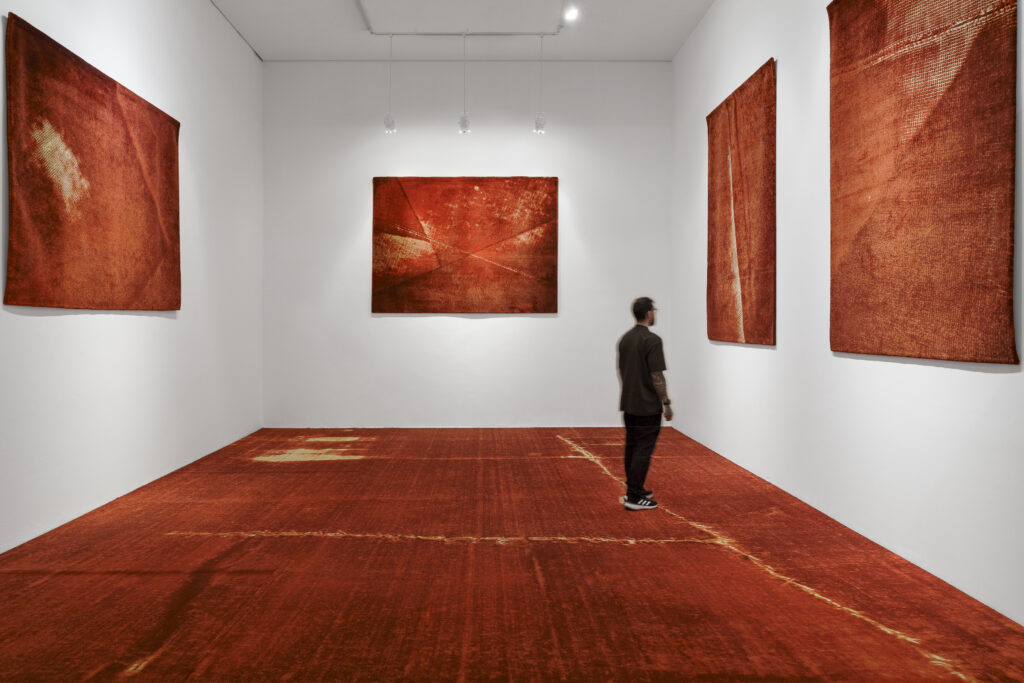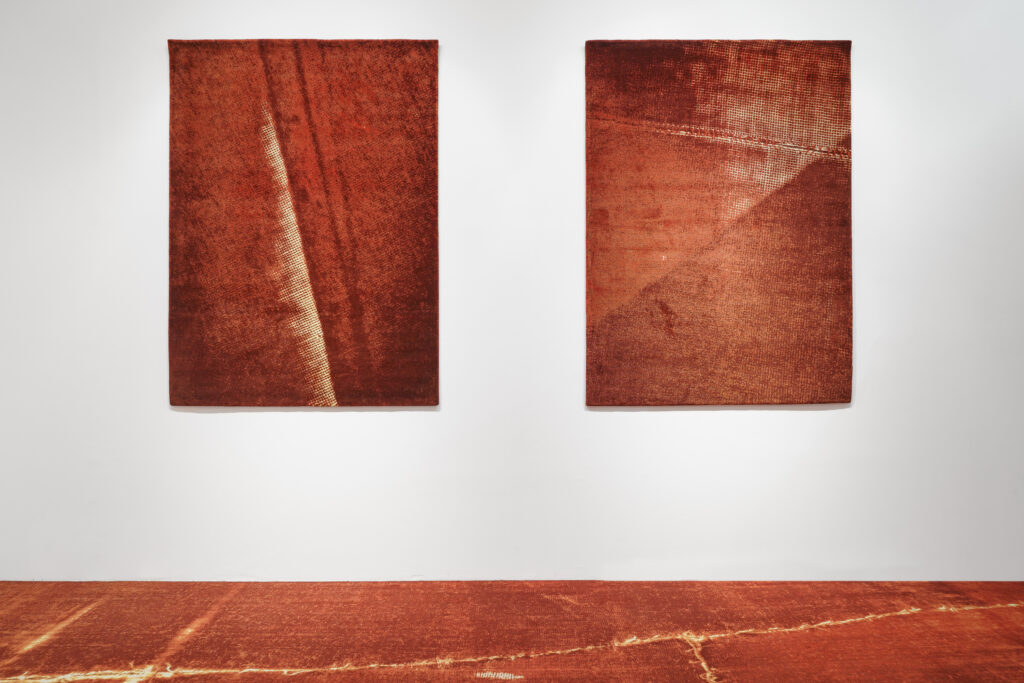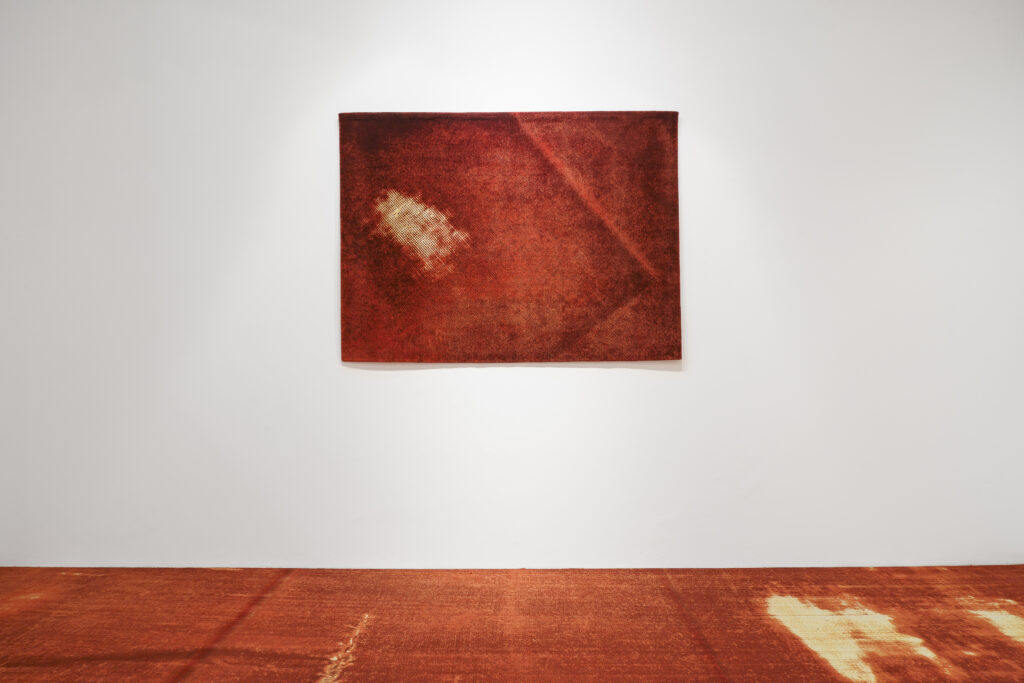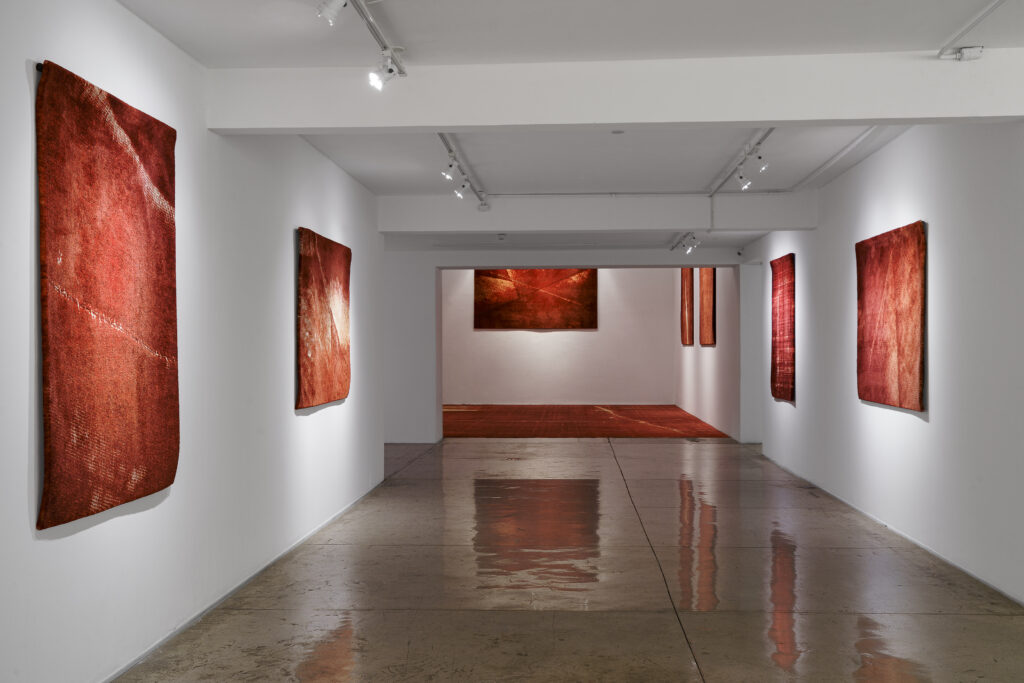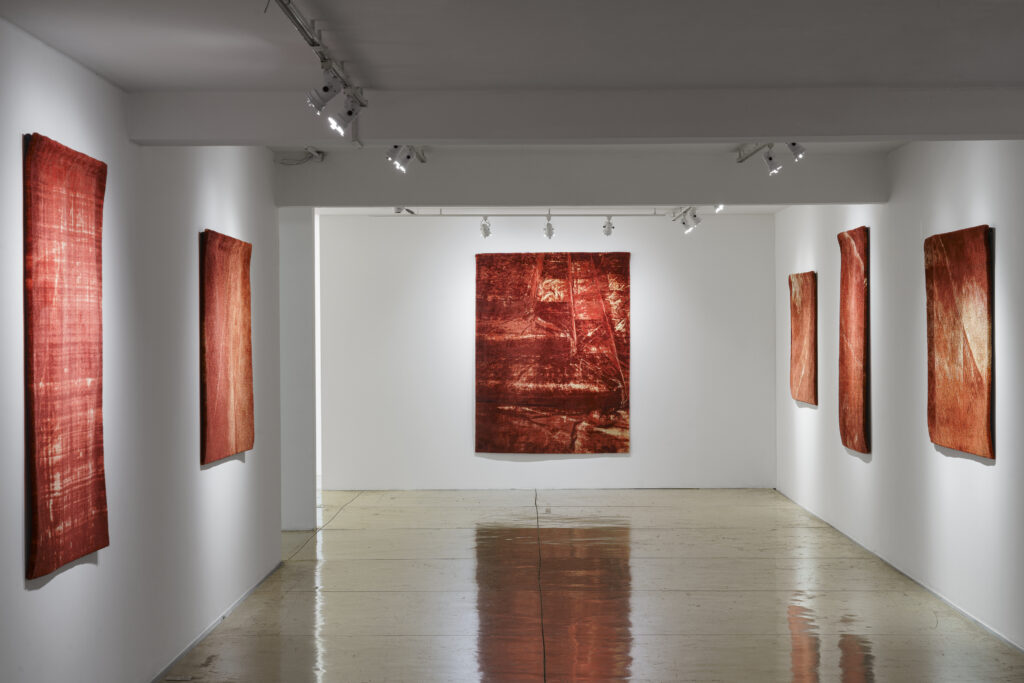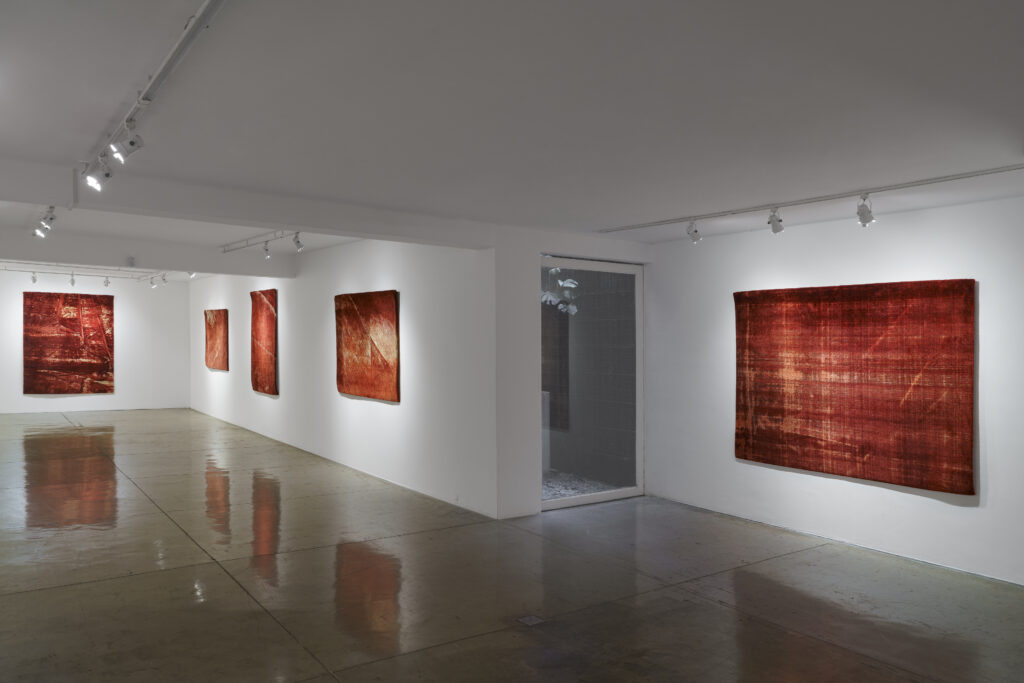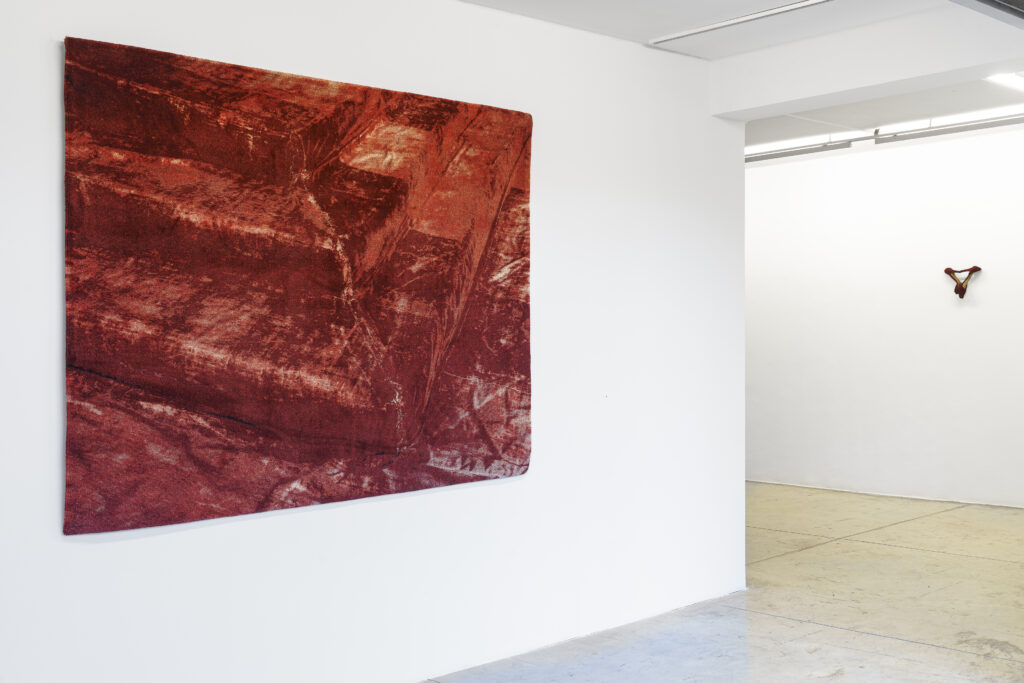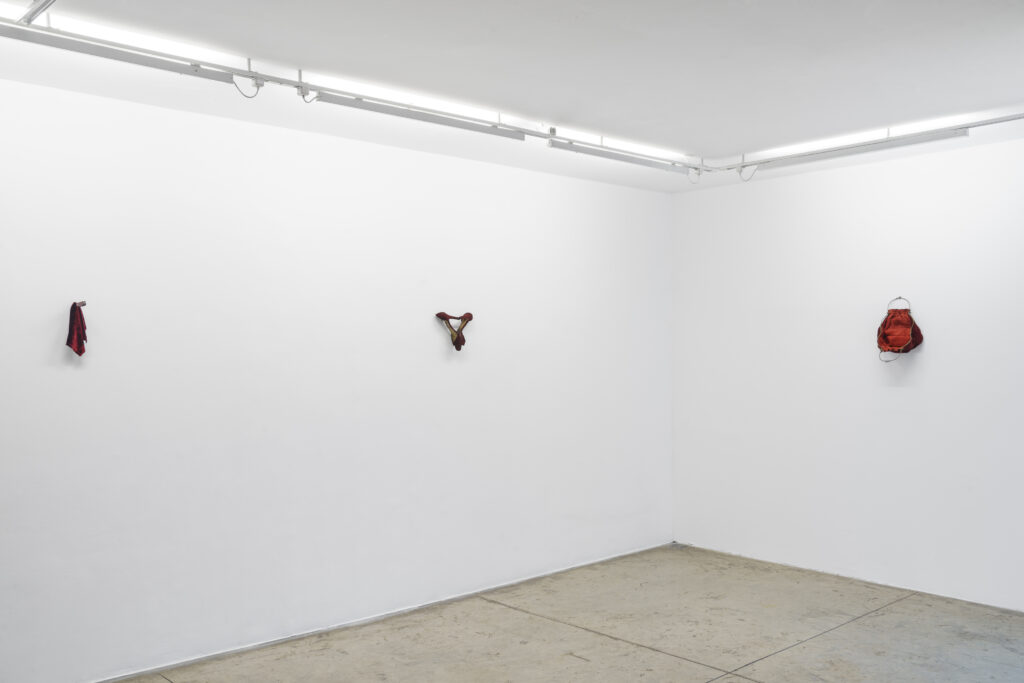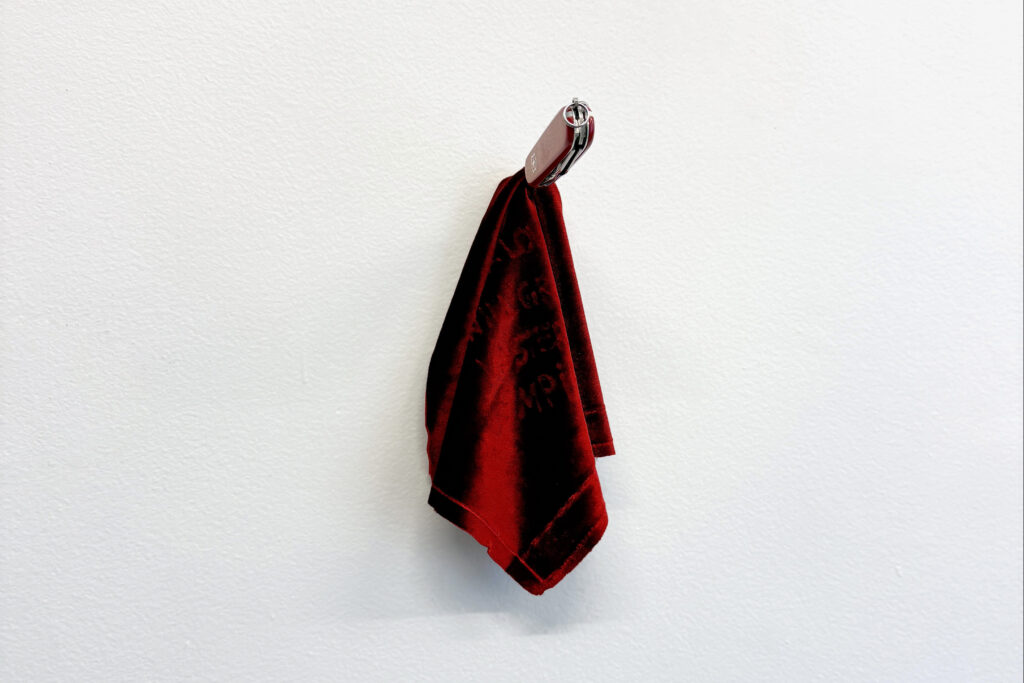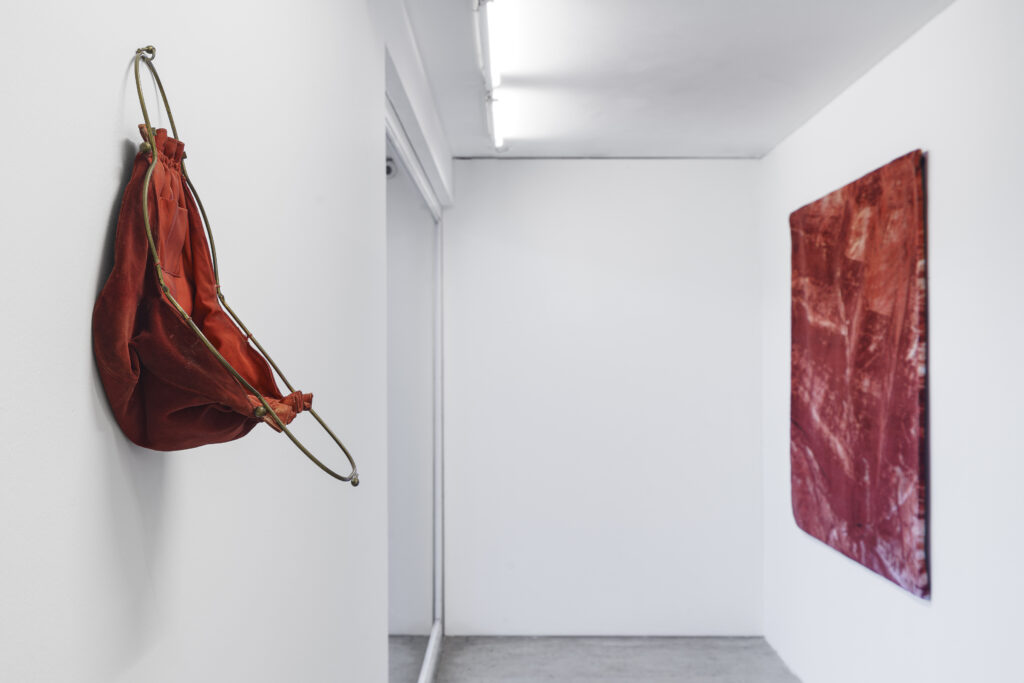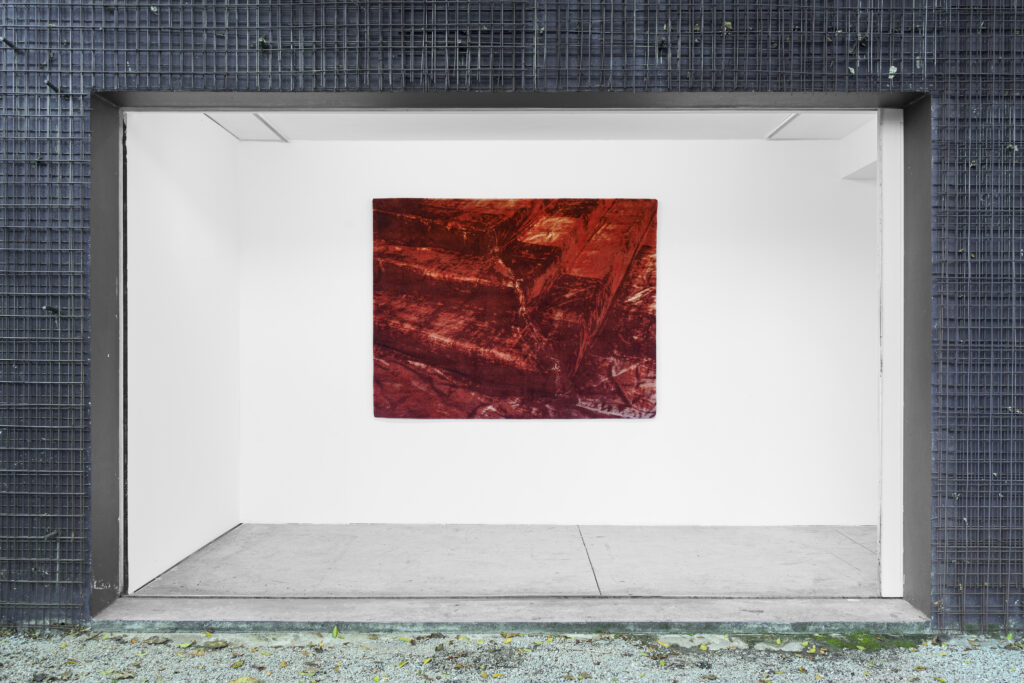


Blue Blood



The exhibition builds upon an intervention the artist carried out in 2013 at the Eva Klabin Foundation in Rio de Janeiro, where Chaves presented rugs that were photographic replicas of fabric details from the foundation’s collection.
In Blue Blood, Chaves displays the new red-toned tapestries on the walls—works that reproduce photographs taken by the artist of carpeted floors in historic European locations such as Palazzo Doria Pamphilij, built in 16th-century Rome; the staircase leading to Napoleon Bonaparte’s (1769–1821) only surviving throne, at the Château de Fontainebleau in France, which dates back to the early 12th century and served as a residence for French royalty; and the Opéra Garnier, designed during the reign of Napoleon III (1808–1873), the thirteenth palace to house the Paris Opera, founded by Louis XIV.
“I really like the idea of the gradient, the fading color, and its French meaning of degraded, something worn out, decadent. With use over time, you can see in these European rugs their various layers, in which the weave stands out and forms a grid. You can also see the marks of the weight on the floor where the rug is placed, forming bas-reliefs. This idea of something worn out and the geometry that emerges are what I like about this work, which ends up almost being a tribute to painting, as if I were painting with the photograph and the pile of the carpet,” says Marcos Chaves. Some works create an “upside down” perspective, such as the works Fontainebleau I and II, which feature the steps to Napoleon’s throne.
